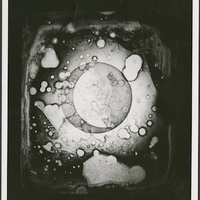Papers by sailau suaalii-sauni
Social Science, Suâesuâe Manogi: In Search of Fragrance., Jun 1, 2018
This is a collection of writing by 10 indigenous Pacific women. Essay topics include images of Ma... more This is a collection of writing by 10 indigenous Pacific women. Essay topics include images of Maori women on New Zealand postcards, the interests and cultural identity of Maori women, education in Western Samoa, young Samoan women and sexuality, gender and work in Fiji, deconstructing the 'exotic' female beauty, representation in films, and poetry.
Sexually Transmitted Infections, 2015
infectious status for some discrepant samples. It is likely that 10-12 instances can be attribute... more infectious status for some discrepant samples. It is likely that 10-12 instances can be attributed to false culture readings, and 3-5 to false NAAT results. Self-limited infections were noted more frequently among younger macaques. Friable tissue was noted more frequently among older animals. Four of the five animals that were re-challenged with TV developed infection. Conclusions The NAAT gave fewer false results, when we had the luxury of a timeline of serial samples to refer to for determining test accuracy. Similar infection rates were observed in both age cohorts. Older animals had a greater incidence of cervicovaginal irritation evidenced primarily by friability in this study, and younger animals tended to self-clear T. vaginalis infection faster than older animals. Finally, TV re-infection is possible in the macaque model.

Journal of Evaluation in Clinical Practice, 2010
Objectives To describe the development and use of a quality improvement service selfevaluation to... more Objectives To describe the development and use of a quality improvement service selfevaluation tool within Pacific addiction services in New Zealand. Methods The study involved two phases: (i) a development phase; and (ii) a testing phase. In Phase I, a preliminary tool was developed and piloted with two Pacific addiction drugs services. It was modified to reduce the number of statements, aligning the statements with the National Sector Standards and incorporating Pacific concepts, themes and motifs that underlie the practices of Pacific providers. In Phase II the resulting tool, named Potalanoa, was then tested in four Pacific addiction treatment services. All services provided feedback on the user acceptability and feasibility of the tool, usefulness and adaptability of the tool to specific service settings. Results The participating services generally found the evaluation tool to be understandable, acceptable and useful. Each service provider demonstrated varied use or implementation strategies for Potalanoa with a general consensus that incorporating the evaluation process within existing team meetings would be ideal. The involvement of all staff within a group setting was also found to be an essential part of the process and a trained facilitator helped with the flow of discussion. Conclusions The study found that there is a need for an evaluation tool for the provision of quality services. For Pacific services it was important that the tool recognize and capture the Pacific approaches utilized in their service delivery. Overall the tool was found to be acceptable and feasible to use, assisted services to identify areas of achievement and to prioritize areas requiring improvement and was adaptable to 'real world' Pacific addiction treatment settings in New Zealand.

Asia-Pacific Psychiatry, 2013
Introduction: Continent-based regional reviews of mental health may not fully describe the status... more Introduction: Continent-based regional reviews of mental health may not fully describe the status of ethnocultural groups that are widely dispersed across multiple continents or traditional world regions. Our aim was to describe the Austronesians, an ethno-linguistic group living primarily in islands and coastal areas in the Pacific and Indian Oceans and Southeast Asia. Methods: Consulting lay databases, we created matrices to describe the demographic, political, and socioeconomic profiles of nations with majority and minority indigenous Austronesian language-speaking populations. We then accessed the scientific literature to describe examples of mental health disparities and/or challenges in mental health care delivery. Results: Many Austronesian-speaking people have experienced recent or current foreign occupation, lack of recognized sovereignty, poverty and low socioeconomic status, and low availability of psychiatric resources and providers. An analysis of the biological, psychological/psychocultural, and social and environmental impacts (risk or protective) on either the prevalence/presentation of mental illness, help-seeking behavior or access to mental health care, or management of mental illness suggested that there may be relatively unique stressors (e.g. loss of homeland from either global warming or nuclear contamination) affecting people in this region and certain biological profiles (e.g. susceptibility to obesity and metabolic syndrome) that may impact psychiatric treatment. Discussion: Solutions to mental health challenges in this world region may include culturally relevant and integrative mental healthcare delivery models; resource preserving, prevention-focused universal mental healthcare; and technology to improve connectivity and increase access to either direct services or workforce-building education and training.

Asia-Pacific Journal of Public Health, 2010
This article reflects on the challenges of strengthening health research capacity from within Sam... more This article reflects on the challenges of strengthening health research capacity from within Samoa. It examines the status of health research and related curricula in Samoa and discusses the outcomes of a new postgraduate applied social and health research methods course taught in Samoa for the first time from 5 January to 12 February 2010 by the Department of Preventive and Social Medicine, University of Otago in collaboration with the Centre for Samoan Studies, National University of Samoa. The article argues that collaborative health research courses such as this methods paper can fill a curriculum gap in New Zealand and Samoa and contribute directly toward strengthening Samoa health research capacity in ways that benefit both Samoa and New Zealand. This initiative can be a flagship for strategies operating from within Samoa that can build real win-win type partnerships. These can be ably led by Samoans for the ultimate development of an affordable and sustainable quality health...
The Contemporary Pacific, 2012

The New Zealand medical journal, Jan 3, 2005
To describe the alcohol consumption patterns and related harms of some Pacific peoples (Samoan, C... more To describe the alcohol consumption patterns and related harms of some Pacific peoples (Samoan, Cook Islands Maori, Tongan, Niuean, Fijian, and Tokelauan) living in Aotearoa (New Zealand), and to draw comparisons with measures from the general New Zealand population. The Pacific Drugs and Alcohol Consumption Survey (PDACS) was carried out with 1103 randomly selected Pacific peoples aged between 13 and 65 years old who were resident in households throughout New Zealand. The survey used computer-assisted telephone interviewing (CATI) and computer assisted cell-phone interviewing (CACI). The interviews were carried out in 2002/03. We descriptively compare findings from the PDACS with those from the 2000 National Alcohol Survey (NAS). Fifty-seven percent of Pacific peoples were drinkers (males 61%, females 51%), compared with 85% of the general New Zealand population (males 88%, females 83%). The average annual consumption of absolute alcohol was 21 litres for Pacific drinkers (males 28...
This article provides an overview of a current three-year (2017–2020) international youth justice... more This article provides an overview of a current three-year (2017–2020) international youth justice research project. The research aims to reveal how Māori and Samoan young people and their families interact with and make sense of youth justice systems across three different settler-colonial countries: New Zealand, Australia and the United States. The research into these culturally distinct communities is building a community-level analysis of youth justice for comparison within and across these countries. The article outlines the study objectives and the theoretical and methodological frameworks used in the research; it also explains why an Indigenous criminology approach is being considered for policy and programmatic solutions that address the youth justice concerns and needs of these communities.
developed key coding instruments and assisted with the coding of clinical information. Marijke Oe... more developed key coding instruments and assisted with the coding of clinical information. Marijke Oed provided secretarial assistance, Andrew Sporle gave advice on Māori health issues, and Barry Gribben provided consultancy services. Sandra Johnson, Wendy Bingley and Lisa Fellowes all contributed substantially at earlier stages of the project.

This chapter seeks to discuss the claim that Samoa has a dual legal system. It explores how an un... more This chapter seeks to discuss the claim that Samoa has a dual legal system. It explores how an understanding of the interplay between (1) the faamatai (Samoa’s chiefly system), (2) Samoa’s parliamentary system, (3) the faasamoa (Samoa’s customary system), and (4) the faakerisiano (Samoa’s Christian system) can help us better understand this claim. It argues the importance of being able to read cultural nuance into case law, political acts and everyday practices of custom. Samoa’s recent H.R.P.P landslide election victory means that Samoa effectively has a one-party state where law-making will be dominated by H.R.P.P persuasions over the next 5 years. Without the checks and balances offered by an opposition party, Samoa’s voting public must find other ways to hold parliament and the government accountable to its prized rule of law—a rule of law assumed to be capable of giving due regard to the nuances of custom and culture i.e. to Samoa’s faasamoa, aganuu, agaifanua, and tu ma aga, a...

AlterNative, 2011
Talofa lava, Malo e lelei, Kia orana, Fakalofa lahi atu, Nisa bula vinaka, Taloha ni... Warm gree... more Talofa lava, Malo e lelei, Kia orana, Fakalofa lahi atu, Nisa bula vinaka, Taloha ni... Warm greetings to you all. When I agreed to accept the invitation to do this keynote address, I did so for two main reasons. First, because Linitā had asked me to do it and I always find it difficult to say no to Linitā. 1 As many of you know, champions like Linitā must be supported where possible. My second reason was because I am always keen to share with people of like minds, to engage in an open and meaningful conversation about what it is that we are doing in universities as Pasifika educators and scholars, and to focus in on what Pasifika education might be exactly and where it could go. In attempting to prepare for this talanoa session, if I may call it that, I went back to the invitation letter and conference correspondence sent to me by Linitā and the organising committee to make sure I address what is expected of me. 2 In reading these I realised that there is an emphasis on teaching. I...

Asia-Pacific Psychiatry
Dear Editor, Mindful that continent-based regional reviews of mental health do not fully describe... more Dear Editor, Mindful that continent-based regional reviews of mental health do not fully describe ethnocultural groups that are widely dispersed across multiple continents, we previously reviewed mental health in the world region populated by Austronesian language speakers and mostly inclusive of islands and coastal areas in the Pacific and Indian Oceans and Southeast Asia (Guerrero, Fung, Suaalii-Sauni, & Wiguna, 2013). We recommended culturally relevant and integrative mental healthcare delivery models to address acculturative stressors and related barriers to care; universal health and mental healthcare to mitigate the effects of poverty and socioeconomic challenges in accessing care; and video-teleconferencing technology to improve connectivity and increase access to services and education in the context of geographic isolation. It has become more apparent that this region of the world is exquisitely impacted by climate change. Small Pacific Island countries urgently face multiple health impacts of elevated temperature, altered rainfall, and more severe extreme weather events (e.g., tropical storms), ocean acidification, and rising sea levels (McIver, Bowen, Hanna, & Iddings, 2015). Climate change exacerbates poverty, overcrowding, poor sanitation, and scarcity of fresh water and hastens the displacement of people from their homelands (Weiss, 2015). Climaterelated health adversities are not just limited to islands, as heavily populated mainland Southeast Asia is also vulnerable to extreme weather events, undernutrition, infectious diseases, and premature death (Bowen & Ebi, 2017). We wholly agree with Coverdale et al. (2018) that climate change is an urgent priority for psychiatry, given these multiple health and social adversities and its potential to increase anxiety and distress and exacerbate cultural trauma. We further believe that climate change is an especially urgent priority in addressing mental health in Austronesia, and we wish to update our previous recommendations to explicitly include carbon footprint reduction, support for resource-sustaining indigenous practices, and care for climate change-affected populations.

Sexually Transmitted Infections, 2015
Background Pelvic inflammatory disease (PID) results from infection ascending to the upper female... more Background Pelvic inflammatory disease (PID) results from infection ascending to the upper female genital tract. The timing of progression of untreated infections is poorly understood and difficult to study prospectively. We investigated temporal relationships between recent sexual partnerships and PID caused by the sexually transmitted infections (STI) Chlamydia trachomatis or Neisseria gonorrhoeae. Methods We did a case-control study, using case records. Cases were women with clinically diagnosed PID and a positive C. trachomatis or N. gonorrhoeae test result. Control groups were women who presented on the same day with: control1) clinical PID and negative test results; control 2) no clinical PID and negative test results; control3) uncomplicated C. trachomatis or con-trol4) uncomplicated N. gonorrhoeae infection. We used survival methods for statistical analysis. Results We analysed data from 356 women: 72 cases, 83 con-trol1, 75 control 2 , 68 control3 and 58 control4. Cases and women in control3 and control4 were younger than women in control1 or control 2 (p < 0.001), intrauterine device use and dates of last menstruation before attendance were similar in all groups. Women with chlamydial or gonococcal PID (cases) had more recently changed sexual partners (median 154 days, IQR 61-736) than those with clinical PID but no infection (control1, median 367 days, IQR 94-1419, p = 0.082). The time from the start of the most recent sexual partnership to symptom onset was shorter in cases (median 121 days, IQR 47-695) than con-trol1 (median 366 days, IQR 104-1552, crude hazard ratio, HR 0.65, 95% CI 0.46-0.92). After adjusting for age, this association was weakened (adjusted HR 0.81, 95% CI 0.56-1.17). Conclusion Differences in the course of STI-and non-STI associated PID were mainly due to age. Further studies to elucidate the course of acute STI and ascending infection will help to understand the impact of screening and treatment interventions on PID prevention. Disclosure of interest No funding was received for this study.

Alternative an International Journal of Indigenous Peoples, Jun 7, 2011
Talofa lava, Malo e lelei, Kia orana, Fakalofa lahi atu, Nisa bula vinaka, Taloha ni... Warm gree... more Talofa lava, Malo e lelei, Kia orana, Fakalofa lahi atu, Nisa bula vinaka, Taloha ni... Warm greetings to you all. When I agreed to accept the invitation to do this keynote address, I did so for two main reasons. First, because Linitā had asked me to do it and I always find it difficult to say no to Linitā. 1 As many of you know, champions like Linitā must be supported where possible. My second reason was because I am always keen to share with people of like minds, to engage in an open and meaningful conversation about what it is that we are doing in universities as Pasifika educators and scholars, and to focus in on what Pasifika education might be exactly and where it could go. In attempting to prepare for this talanoa session, if I may call it that, I went back to the invitation letter and conference correspondence sent to me by Linitā and the organising committee to make sure I address what is expected of me. 2 In reading these I realised that there is an emphasis on teaching. I am neither by formal training nor by natural inclination (I am told) a teacher. I have been a student of law and sociology and have attempted to try my hand at what the university calls ‘lecturing’ (which for some is distinguished from‘teaching’). I have some field experience as a social researcher in Pacific health and a keen interest in Pacific research methodologies. 3 If anything, I guess I would lean more towards the enterprise of research than that of teaching. The two are, however, not mutually exclusive.

Pacific health dialog, 2009
Cultural competency is about the ability of individuals and systems to respond respectfully and e... more Cultural competency is about the ability of individuals and systems to respond respectfully and effectively to the cultural needs of peoples of all cultures. Its general attributes include knowledge, attitudes, skills and professional judgment. In Pacific mental health, 'the cultural' is generally understood to be ethnic culture. Accordingly, Pacific cultural competencies assume ethnic specific markers. In mental health Pacific cultural competencies has seen a blending of cultural and clinical beliefs and practices. This paper provides an overview of five key theme areas arising from Auckland-based ethnic-specific Pacific workshop data: language, family, tapu relationships, skills and organisation policy. Workshop participants comprised of Pacific mental health providers, Pacific consumers, family members of Pacific consumers and members of the Pacific community members. This paper purports that identifying the perceptions of different Pacific groups on ethnic-specific eleme...

Asia Pacific Viewpoint, 2014
In building Samoan academic researcher capacity in Samoa, we argue that there is a need to first ... more In building Samoan academic researcher capacity in Samoa, we argue that there is a need to first establish the kind of researcher community advocated by Linda Tuhiwai Smith, and to do so through developing research tools, such as the talanoa and faafaletui, in partnership with researcher capacity-building initiatives such as the applied postgraduate social and health research methods course (coded PUBX731-HSA505) run by the Centre for International Health, University of Otago, in partnership with the National University of Samoa. This paper offers a commentary on the talanoa and faafaletui as Pacific research methodologies, and asks what its value might be for researchers in Samoa. It reflects on the learning experiences of staff and students of the applied social and health research methods course in relation to the talanoa and faafaletui as Pacific research methodologies or methods. It concludes that developing Pacific research and researcher capacity in Pacific Island countries, such as Samoa, must include opening up spaces within these communities to critically engage what is Pacific or Samoan or indigenous about these research tools, methods or methodologies, and how they might differ in form or substance from other methods or methodologies. O le ‘oto'otoga I le atina'e o le su'esu'eina o le poto salalau i Samoa, matou te manatu e ao ona faatuina ni faalapotopotga e pei ona fai mai Linda Tuhiwai Smith e ala lea i ni mafutaga faafaletui e galulue faatasi ma le PUBX731-HSA505 lea e faafoeina e le Iunivesite o Otago ma le Iunivesite o Samoa (NUS). O le pepa lenei e faamatala ai le metotia o le faafaletui i lona mau faavae ma lona aoga i le su'esu'ega a tagata Samoa i le poto salalau. O loo faailoa mai ai le iloa ma le poto masani o faia'oga ma le fanau a'oga i le faatinoga ma le aoga o le metotia o le faafaletui. Ma ua maua ai se manatu faapea: E ao i le su'esu'eina o le poto salalau i Samoa ma isi atunuu i le Pasefika ona sa'ili, po o a tonu lava metotia e afua mai i le laufanua o le Pasefika ma pe faapefea ona iloa ‘ese'esega mai isi metotia?











Uploads
Papers by sailau suaalii-sauni